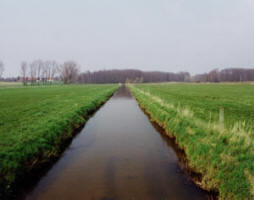 Nuclear Desalination: Fresh Water from Waste Heat of Power Plants
Nuclear Desalination: Fresh Water from Waste Heat of Power Plants
Nuclear desalination uses the excess heat from a nuclear power plant to evaporate sea water and to condense the pure water. Writing in the appropriately named International Journal of Nuclear Desalination, a team from
A ready supply of fresh water is a human right, but access to safe drinking water is becoming increasingly difficult to achieve in many parts of the world. The problems of climate change and population growth are all leading to new pressures on water. Desalination of brackish and sea water by reverse osmosis is expensive and inefficient. Marco Rognoni of Saline Water Specialists, in
"The selection of the appropriate desalination technology between evaporation and reverse osmosis is grounded on several factors, including investment cost, maintenance cost, degree of availability, heaviness of the duty, and the required purity of the desalinated water," the team explains. "The main factor, however, is often the running cost of the plant, and specifically the cost of the consumed energy."
Energy input accounts for 35 to 45% of the total cost of producing desalinated water using reverse osmosis in which sea water is forced under pressure through a semi-permeable membrane, a filter, so that the ions that make it "salty" are left behind and purified water is formed on the other side of the membrane. However, energy costs are rising while environmental pressure on reducing greenhouse emissions requires alternative and sustainable energy sources for industrial processes.
Conventionally, evaporative desalination is considered to be even less efficient, purportedly requiring twice the energy. However, Rognoni and colleagues have recalculated the energies involved and suggest that not only is this a serious over-estimate. Calculations were previously based, not on the efficiency of the water purification process but as a loss of energy from steam turbines. They also point out that given the essentially free heat energy available as a by-product of electricity generation using nuclear power, evaporative desalination should be the best approach to generating fresh water
| Contact information | n/a |
|---|---|
| News type | Inbrief |
| File link |
http://www.sciencedaily.com/releases/2011/05/110512082949.htm |
| Source of information | Science Daily |
| Keyword(s) | Water governance, water desalination, water distribution, water management, Climatic change |
| Subject(s) | CHARACTERISTICAL PARAMETERS OF WATERS AND SLUDGES , DRINKING WATER , DRINKING WATER AND SANITATION : COMMON PROCESSES OF PURIFICATION AND TREATMENT , POLICY-WATER POLICY AND WATER MANAGEMENT , SANITATION -STRICT PURIFICATION PROCESSES , WATER DEMAND , WATER QUALITY |
| Relation | http://www.emwis.net/topics/Desalination |
| Geographical coverage | India,Italy, |
| News date | 17/05/2011 |
| Working language(s) | ENGLISH |
 you are not logged in
you are not logged in





